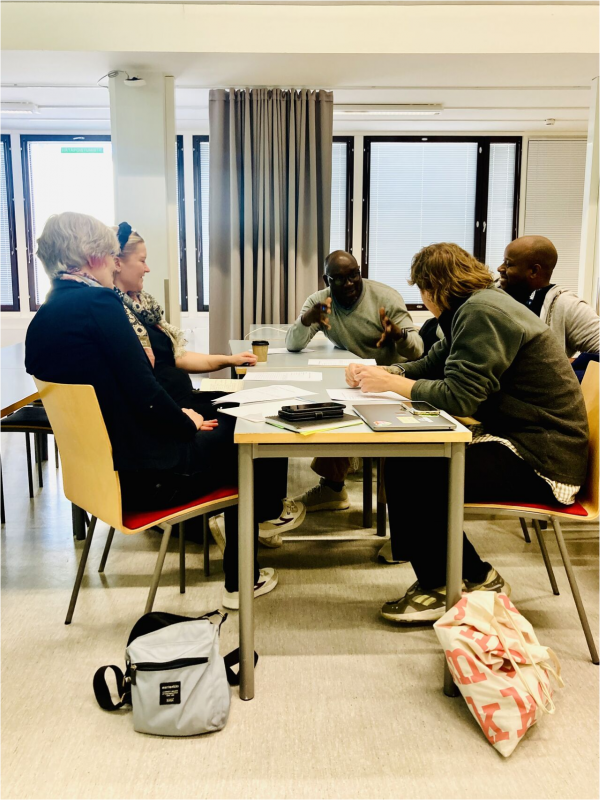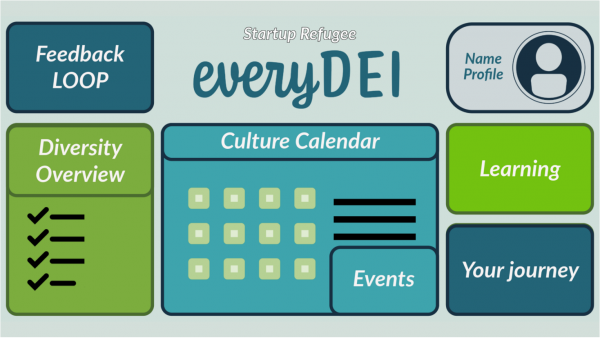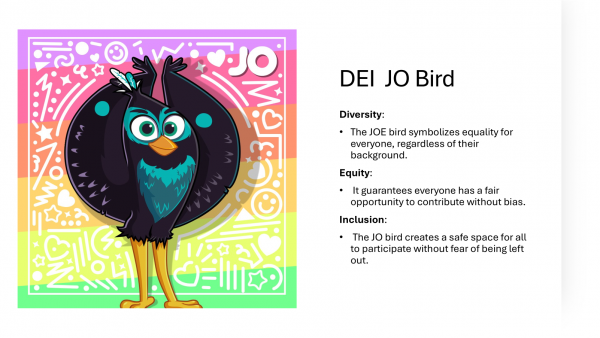
Bloggar
Intercultural Hackathon on Inclusive Leadership at Novia Business 3-4.10.2024

The main strategic goals of Novia for 2030 are Nordic co-operation, Global orientation and Sustainable solutions. Widening the international market is a prerequisite for Novia’s development and for Finland as a society towards a more global orientation. This direction can be seen as a learning path for every professional at Novia, and lead to more interesting and challenging work assignments. The long-term aim of the work on global competence at Novia, is a changed mindset and attitudes of the majority of the staff, to embrace the idea that Novia is a university of applied sciences with an international focus.
As part of the work on global competence at Novia, some faculties arrange an intercultural academic year. The Faculty of Business organises an academic intercultural year 2024-2025. As part of this, a kick-off week was organised at the beginning of October 2024 on campus Henriksgatan in Turku. The different business teams had their own program with a touch of intercultural communication and global competence. The week ended with a two-day hackathon, involving close to 80 second-year students of business administration and social services. The students were mainly from Finland, but some international students from Tanzania, Germany and Ukraine participated in the event.

Participants of the hackathon
The challenge
The theme of the hackathon was diversity, equity and inclusion (DEI) from a leadership perspective. The students did some pre-reading on the subject to have a better understanding of the topic at hand. A keynote speech was delivered by DEI consultant Adrien Fernandez from the company deidei. He explained what DEI is and why it is important to learn more about it. Deidei is a Nordic-based, global DEI-agency that provides services such as training, workshops, assessments and consulting to different companies and organizations (see deidei.co).
Way of working
After the keynote, the students were divided into 16 groups of 4-5 persons and given a specific organisation or company to research regarding their DEI-maturity, based on a framework used by deidei. The double diamond model, especially used in service design, was used in this context to visualize and open the design and innovation process to the students. The student groups first conducted research to identify the problem, before they started to develop a solution. The subject was rather new to the students, and they also struggled with understanding the assignment and what they were supposed to do. The students felt the organisations in question were already doing well in terms of diversity, equity and inclusion.
Results
After having studied web pages, social media and other sources, as well as contacted the companies, their customers or other stakeholders directly, the groups, however, managed to find things that could still be improved and were able to continue working on solutions to the issues identified in the process. The students presented the problem and their suggested solution to a jury in a five-minute pitch at the end of day 2. The diversity theme was also reflected on in the jury, as the six jurors represented 4 different nationalities. The jury had the opportunity to ask some questions after each presentation and graded the groups based on the following criteria: depth of DEI analysis (max.20 point), impact on DEI (max.25 points), practicality and feasibility (max. 20 points), innovation and creativity (max. 25 points) and finally, presentation and communication (max.10 points). No group managed to get the full 100 points, but the winning groups scored very high, especially in the fields of innovation, creativity and practicality of their solutions. One of the winners presented "everyDEI," a comprehensive digital platform designed to support and enhance the organisation’s efforts in diversity, equity, and inclusion. The platform included features such as learning modules, events, community building and a cultural calendar portraying various cultural holidays and events. (see figure 1).

Figure 1: everyDEI
The other winning group designed a video meeting platform for a gamification company’s meetings and recruitment, enabling anonymous interviews through using the company’s game-related characters and voice alteration. This would ensure that the participants are met as equals without any bias due to nationality, gender, age, looks or other. (see figure 2).

Figure 2: DEI JO Bird
Lessons learned
The event proved to be a great learning experience for the students, pushing them outside of their comfort zones. They learned how companies and organisations present themselves regarding corporate social responsibility (CSR), and more specifically diversity, equity and inclusion. They learned what DEI is and why it is important. The following student quote clarifies in a simple way how the mindset can change during a 24 hour-event.
“I learned that DEI is not just about numbers or ticking boxes; it’s about creating systems and processes that allow everyone to have equal opportunities and feel valued in the workplace.”
In addition, the students learned to work under time pressure, to search for and summarise a lot of information into a five-minute pitch. They learned to organise themselves as a group, working with people from different backgrounds on a task involving a lot of uncertainty. For many, the pitching in front of a jury in a non-native language was nerve wrecking but all the students survived it. Naturally, there were groups which functioned better than others, group members who did more than others and unfortunately also some people who did not feel included in their group. A lesson learned for the teachers is to strive for a better balance between students from different degree programs. This time most of the students were from the business administration field, leaving some of the social services students feeling they were at a disadvantage. On the other hand, the seven international students did not express feeling at a disadvantage and were rather positive regarding the experience and the opportunity to get to know and work with local students, learning about Finnish culture and different styles of communication. As one of them expressed it:
“I noticed that in Finland, people value silence and reflection before offering their thoughts, whereas I was more used to speaking up and discussing ideas right away. This led to a bit of an adjustment period where I had to become more attuned to their communication style. I realized that just because my teammates were not as vocal as I was, it didn’t mean they weren’t engaged or contributing valuable ideas. Over time, I learned to listen more actively and appreciate the thoughtful insights they brought forward after taking their time to reflect.”
A hackathon is an excellent method to explore a topic that is new to many of the participants. Generally, students enjoy the intensive way of working, where they come together in new constellations to collaborate and solve a problem. The topic for the above hackathon was inclusive leadership and the setup was international since the students that participated were of different ethnic origin, as well as the jury members. Consequently, there was both a theoretical and a more practical perspective to global orientation and hopefully elements that the students will be able to relate to in their professional lives.
The blogpost has been reviewed by Novia's editorial board and accepted for publication on 11.11.2024.
![]()
Pedagogiska bloggen
I bloggen kan du läsa om pedagogiska metoder och ta del av goda lärdomar av dina medarbetare. Bloggen skrivs av olika författare och inlägg som är granskade och godkända av Novias redaktionsråd är markerade och taggade med #granskat inlägg.
Vi följer CC BY 4.0 om inget annat nämns.
Ansvarsfriskrivning: Författaren/författarna ansvarar för för fakta, möjlig utebliven information och innehållets korrekthet i bloggen. Texterna har genomgått en granskning, men de åsikter som uttrycks är författarens egna och återspeglar inte nödvändigtvis Yrkeshögskolan Novias ståndpunkter.
Disclaimer: The author(s) are responsible for the facts, any possible omissions, and the accuracy of the content in the blog.The texts have undergone a review, however, the opinions expressed are those of the author and do not necessarily reflect the views of Novia University of Applied Sciences.